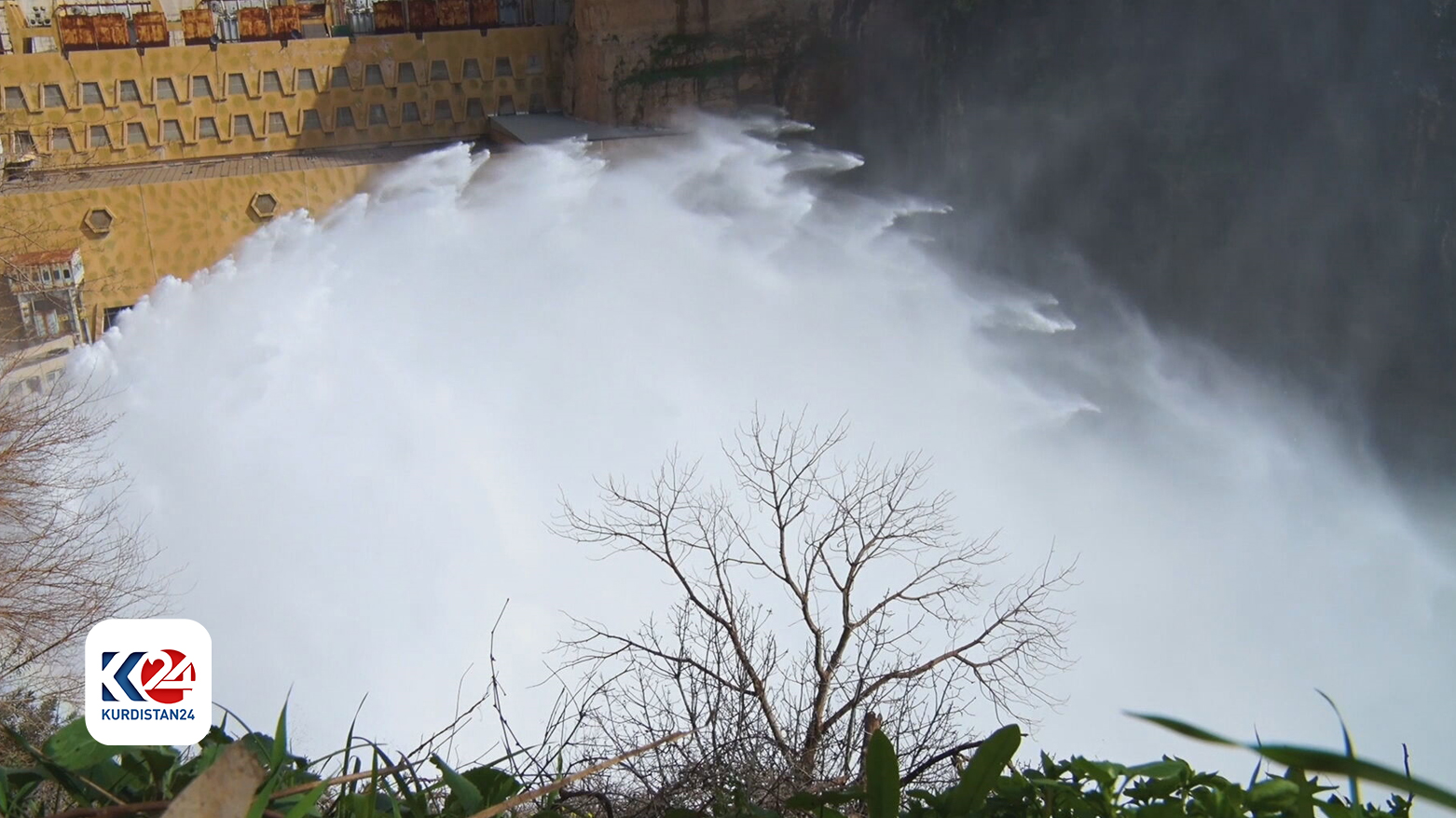Dukan Dam’s water levels decline amid increased electricity production
On Monday, Jamal reported that the lake's water level is decreasing by four centimeters each day, primarily due to the dam releasing more water than is being replenished.

ERBIL (Kurdistan24) – The Dukan Dam, one of the Kurdistan Region's key hydropower plants, is experiencing a daily drop in water levels as two of its electricity generation units remain in operation, according to Kochar Jamal, the dam’s director.
On Monday, Jamal reported that the lake's water level is decreasing by four centimeters each day, primarily due to the dam releasing more water than is being replenished.
Despite the current decrease, measurements from the Dukan Dam Directorate show that the lake holds more water this year compared to the previous year.
This increase is attributed to the heavy rains last winter and intermittent water releases from Iran, which have helped revive local water sources.
In contrast to the past six years, the Little Zab River in the Pishdar district, which partially depends on local sources within the Kurdistan Region, has not experienced the usual summer water shortages.
Iran's decision to release water several days a week has significantly improved the situation, ensuring a steady flow into the Little Zab and subsequently into Dukan Lake.
Maref Mahmood, director of the Khas Water Project, highlighted the positive impact on the region: "Compared to previous years, the situation is much better this year, with more water flowing from East Kurdistan."
The Khas Water Project is crucial, supplying drinking water to over 80% of Pishdar district's population.

The increased water levels in the Little Zab River have also benefited Dukan Lake, which, as a result, holds more water this year than last.
The operation of two power generation units, producing 160 megawatts of electricity, has, however, led to a situation where water is being withdrawn from the lake at a rate three times higher than the inflow.
"The average water level of Dukan Lake this year is five meters higher than last year," Jamal noted. "Currently, the dam discharges 140 cubic meters of water per second, while the inflow ranges between 40 to 50 cubic meters per second."
The higher water levels have also had a positive impact on local tourism. The port of Ranya, located on the lake, is witnessing increased activity, with tourist boats regularly navigating the waters, adding to the scenic beauty of the area.
However, the region still faces challenges. Since the completion of the Sardasht Dam in June 2017 in Sardasht, East Kurdistan, Northwestern Iran, a significant water source feeding the Little Zab River and Dukan Lake has been blocked, complicating water management in the region.
